Discover 6 hidden attractions, cool sights, and unusual things to do in Jamestown (United States). Don't miss out on these must-see attractions: Jamestown Settlement, Historic Jamestowne, and Jamestown Glasshouse. Also, be sure to include Swann's Point Plantation Site in your itinerary.
Below, you can find the list of the most amazing places you should visit in Jamestown (Virginia).
Table of Contents
Jamestown Settlement
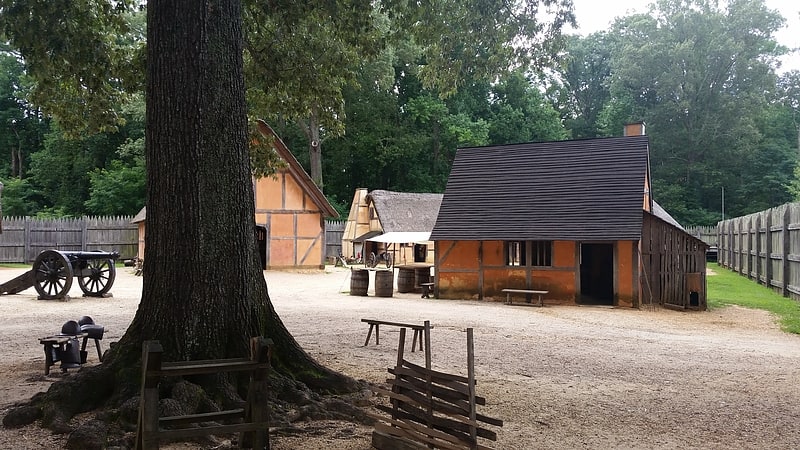
Museum in James City County, Virginia. Jamestown Settlement is a living history museum operated by the Commonwealth of Virginia, created in 1957 as Jamestown Festival Park for the 350th anniversary celebration. Today it includes a recreation of the original James Fort, a Powhatan Native American town, indoor and outdoor displays, and replicas of the original settlers' ships: the Susan Constant, Godspeed, and Discovery.
The museum complex is located adjacent to Historic Jamestowne, on Jamestown Island, which is run in partnership by the National Park Service and the Jamestown Rediscovery Foundation, a private nonprofit branch of Preservation Virginia dedicated to the archaeological mission. Historic Jamestowne is established in the original James Fort and Jamestown Colony, the first successful English settlement on the mainland of North America, founded on May 14, 1607. Colonial Williamsburg and The American Revolution Museum in Yorktown, additional living history sites, follow the next centennial of Virginian and American history up to the American Civil War. The Colonial Parkway connects all of these sites. The Jamestown-Yorktown Foundation is a Virginia state agency that administers the education aspects the Jamestown Settlement as well as the American Revolution Museum at Yorktown.[1]
Address: 2210 Jamestown Rd, 23185 Jamestown
Historic Jamestowne
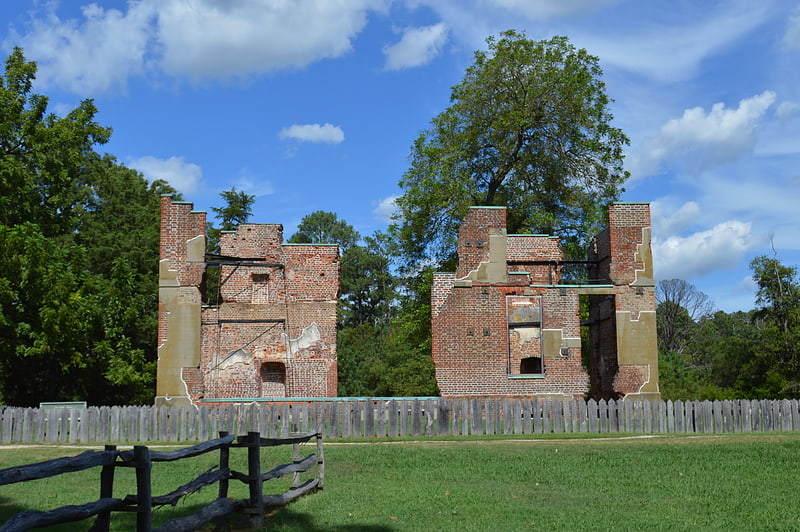
Museum in Jamestown, Virginia. Historic Jamestown is the cultural heritage site that was the location of the 1607 James Fort and the later 17th-century town of Jamestown in America. It is located on Jamestown Island, on the James River at Jamestown, Virginia and operated as a partnership between Preservation Virginia and the U.S. National Park Service as part of Colonial National Historical Park.
The site was designated Jamestown National Historic Site on December 18, 1940 and listed on the National Register of Historic Places on October 15, 1966. It was also designated a National Historic Chemical Landmark in 2007 by the American Chemical Society. It is adjacent and complementary with Jamestown Settlement, a living history museum built run by the Commonwealth of Virginia to interpret the early colony.[2]
Address: 1368 Colonial Pkwy, Jamestown
Jamestown Glasshouse
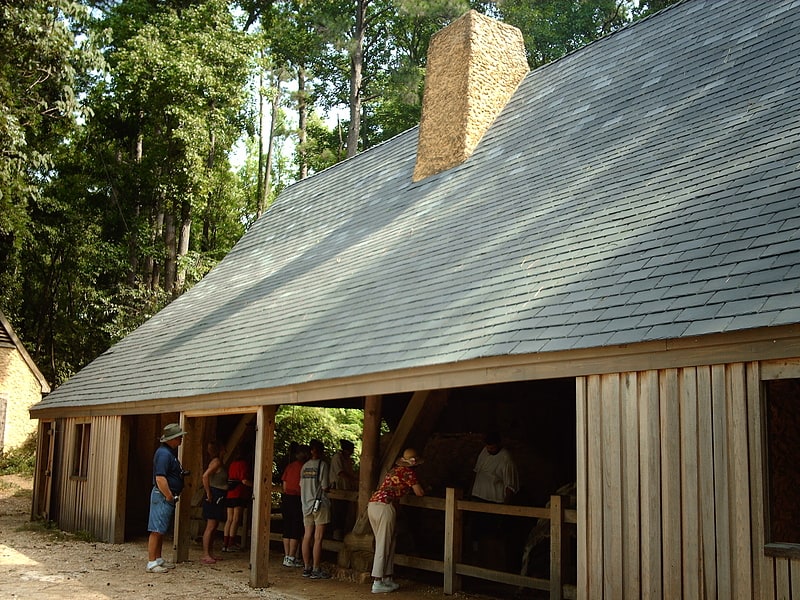
Historical place museum in James City County, Virginia. The Jamestown Glasshouse is located in Jamestown, Virginia, between Jamestown Island, the location of the first permanent English settlement in North America, and Jamestown Settlement. It is currently a part of the Colonial National Historical Park, and associated with Historic Jamestowne, and located near the Colonial Parkway.[3]
Address: 1355 Colonial Pkwy, 23185-1900 Williamsburg
Swann's Point Plantation Site

The Swann's Point Plantation Site is an archaeological site near the James River in Surry County, Virginia. The Swann's Point area, located west of the mouth of Gray Creek, has a rich historic of precolonial Native American occupation, as well as significant early colonial settlements. It was first granted to Richard Pace, whose warning famously saved the Jamestown Colony during the Indian Massacre of 1622. The Paces abandoned their settlement in 1624.
In 1628, the tip of Swann's Point was a site at which the colonists of Jamestown traded with the local natives. The Swann family association with the area began in 1635, when William Swann acquired a land patent for 1200 acres at Swann's Point. The plantation increased to 1650 acres by patents to Col. Thomas Swann in 1638 and 1655
After Bacon's Rebellion (1676) the King's Commissioners sent to Virginia in investigate the "troubles" held their proceedings at Swann's Point. It was here, then, that petitions were heard complaining of the conduct of William Hartwell, captain of Governor Berkeley's guard, in the suppression of the rebellion.
Swann's Point was sold by the son of Col. Thomas Swann in 1706 to John Joseph Jackman, the plantation was purchased in turn from Jackman in 1709 by Major George Marable who three months later sold the plantation to his brother-in-law, John Hartwell. Upon his death in 1714, Swann's Point passed to John Hartwell's daughter, Elizabeth, then a minor. When she later married Richard Cocke of Henrico County they made their residence at Swann's Point. It remained in the Cocke family for several generations and was the birthplace of General John Hartwell Cocke who later became associated with Bremo in Fluvanna County.
In the mid-1900s, the plantation was purchased by state Sen. Garland Gray, who used it as a summer home until the manor house was destroyed by fire. Later, Gray, who was one of the wealthiest men in Virginia and owned tens of thousands of acres of land bet the Swann's Point property on game of cards and lost. True to his word he transferred the property to the winner.
The site which contains 17th century graves was listed on the National Register of Historic Places in 1975. A portion of the Swann's Point area was donated by the owners to the National Park Service in 1974 to forestall the construction of a bridge across the James River to the area.[4]
Amblers
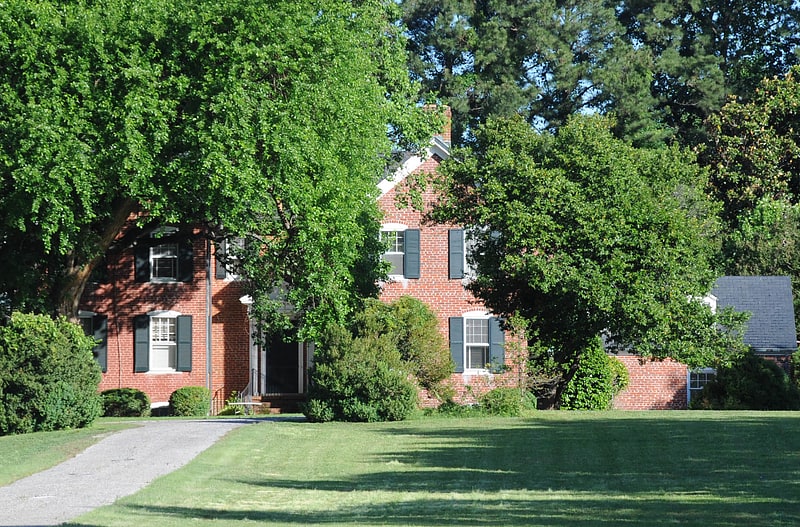
Amblers, also known as the Coke-Watts House, is a historic farmstead at 2205 Jamestown Road in James City County, Virginia, just north of the Jamestown peninsula. Its main house is a handsome 2-1/2 story brick structure, built in 1852 in the country style promoted by Andrew Jackson Downing, and expanded with a sympathetically styled Colonial Revival addition in the 1950s. The property includes two surviving 19th-century brick farm outbuildings, and landscaping from the 1950s that is also considered historically significant.
The property was listed on the National Register of Historic Places in 2015.[5]
Pleasant Point
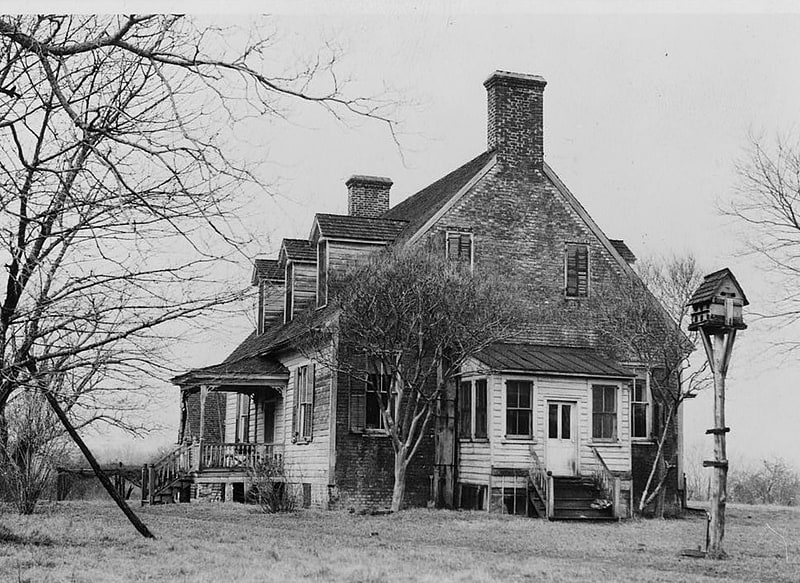
Pleasant Point, also known as Crouches Creek Plantation, is a historic home located near Scotland, Surry County, Virginia. It was built about 1724, and is a 1 1/2-story, double pile frame dwelling with brick ends. It has a gable roof and originally had a hall-parlor plan, later modified to a central-hall plan. The interior woodwork was largely replaced in the 1950s, although it retains some original doors, framing and original bowfat in the dining room. Also on the property are a contributing dairy, smokehouse, laundry and a four-step terrace leading down to the bluffs overlooking the James River.
It was listed on the National Register of Historic Places in 1976.[6]